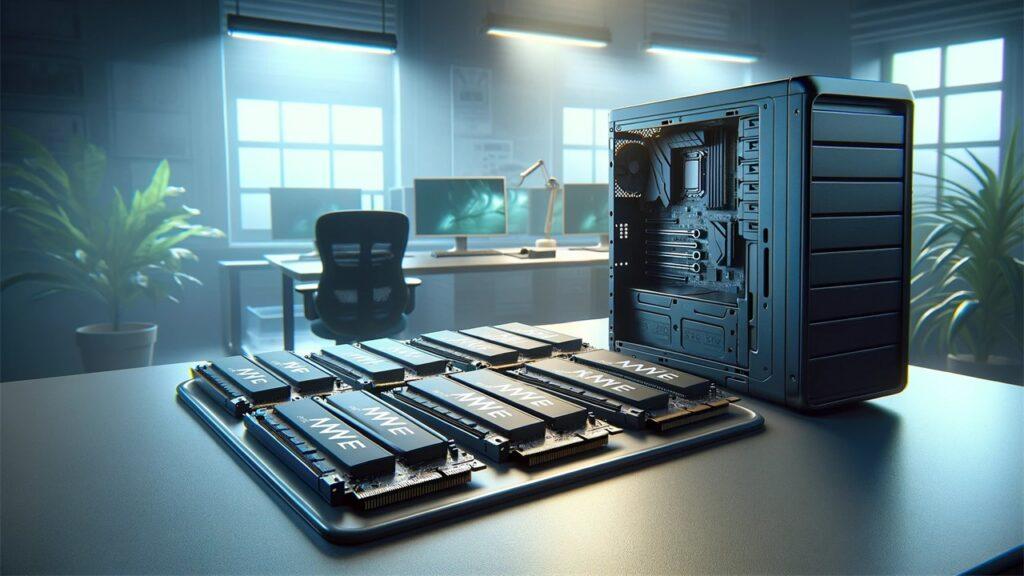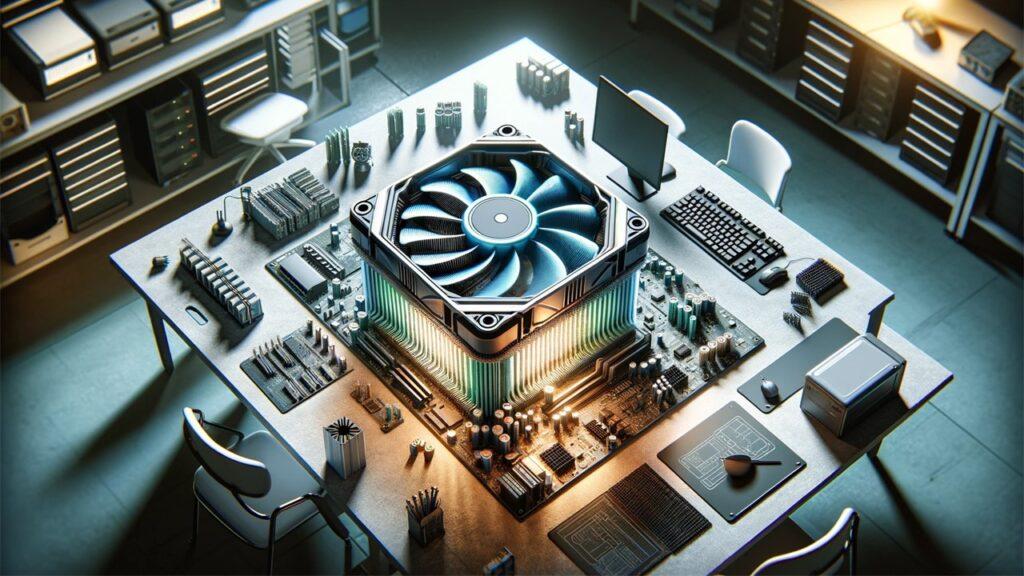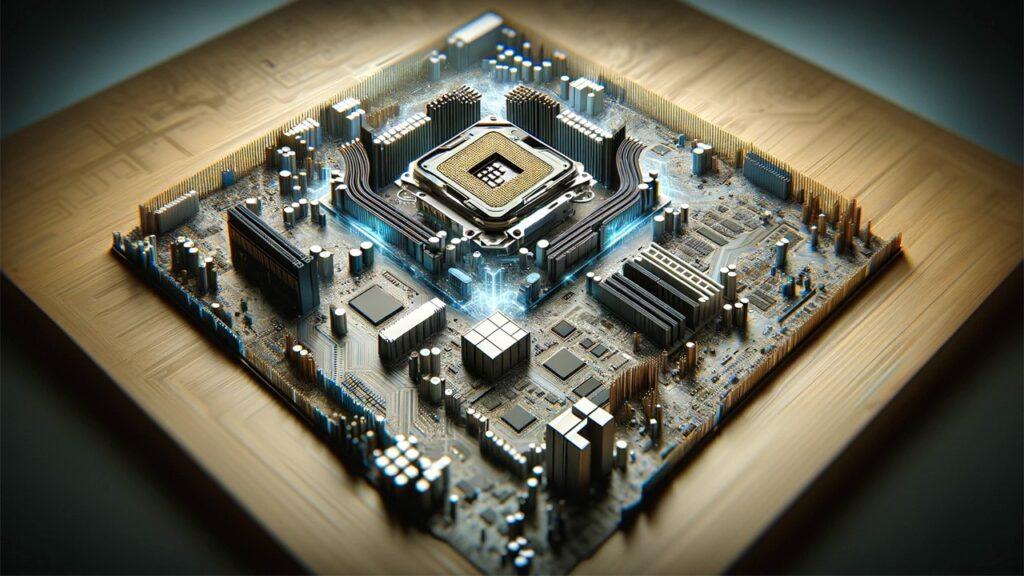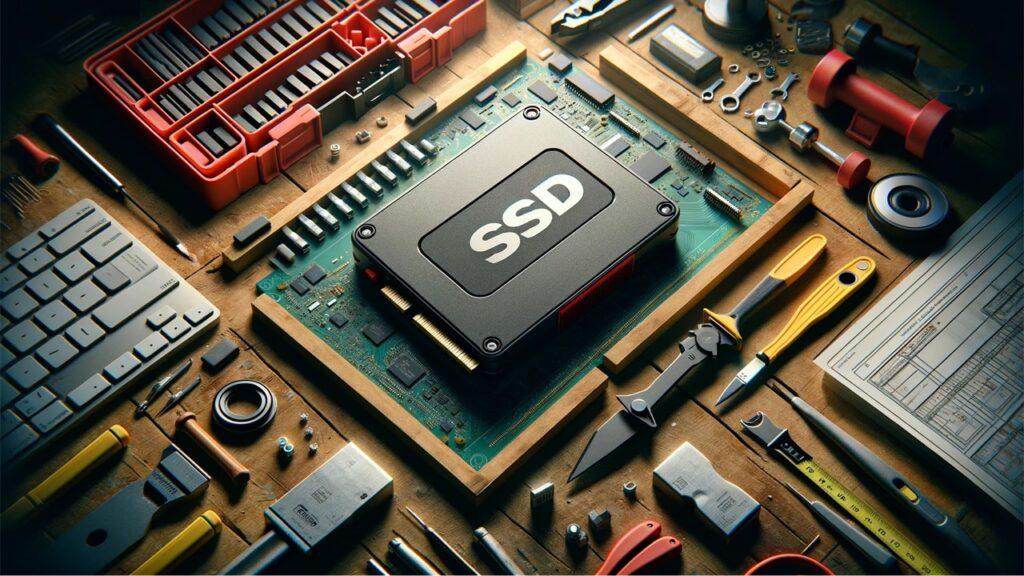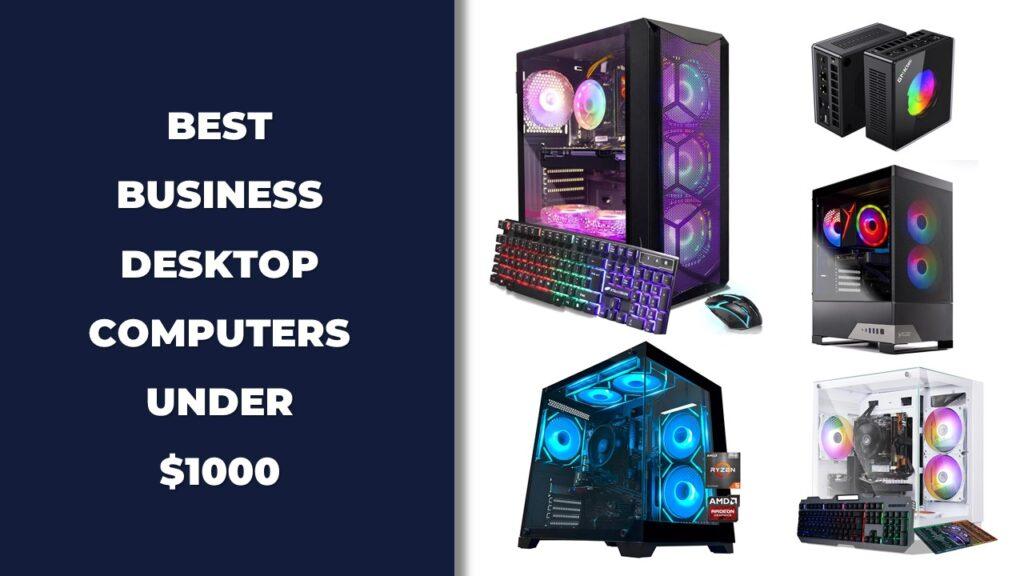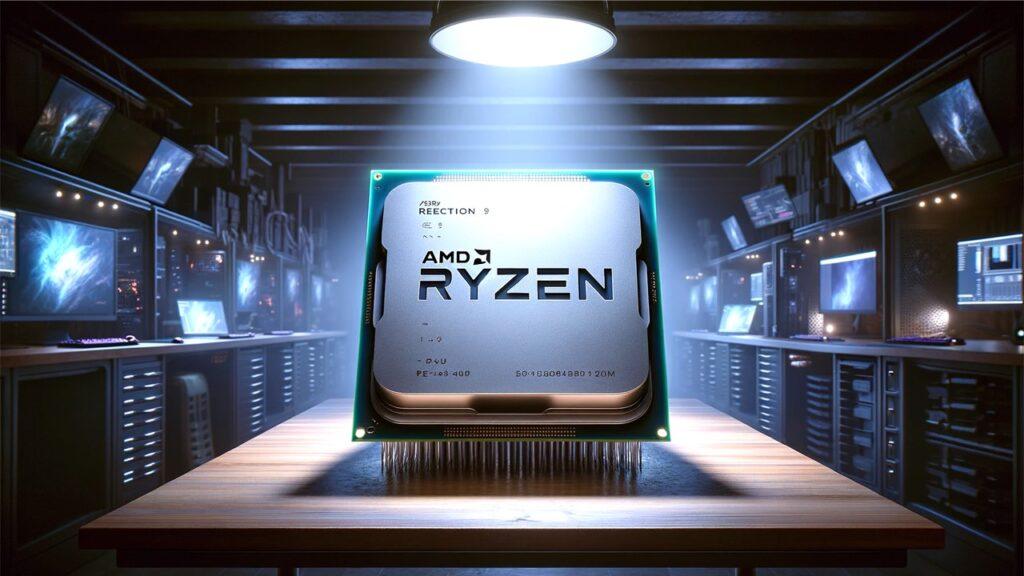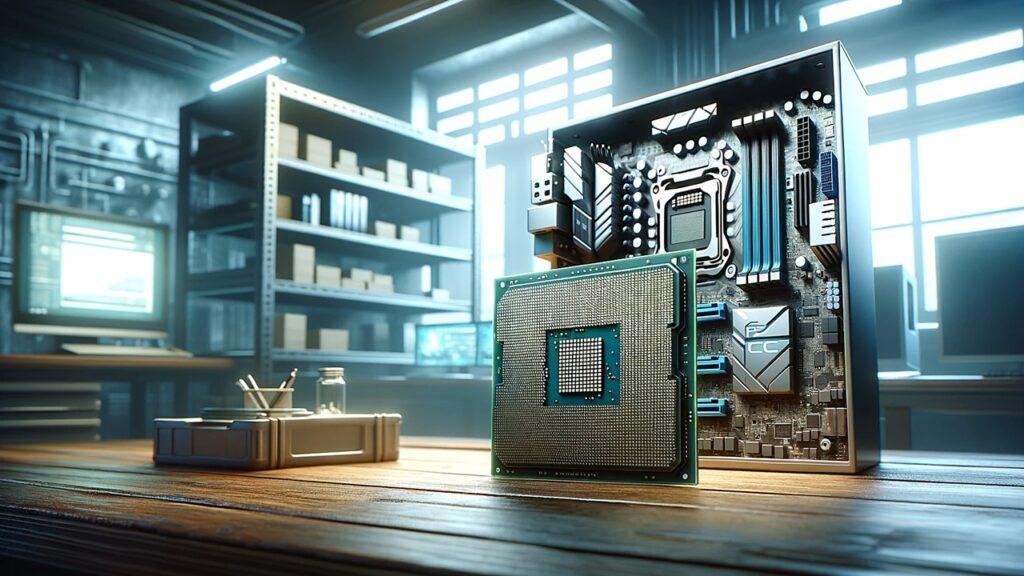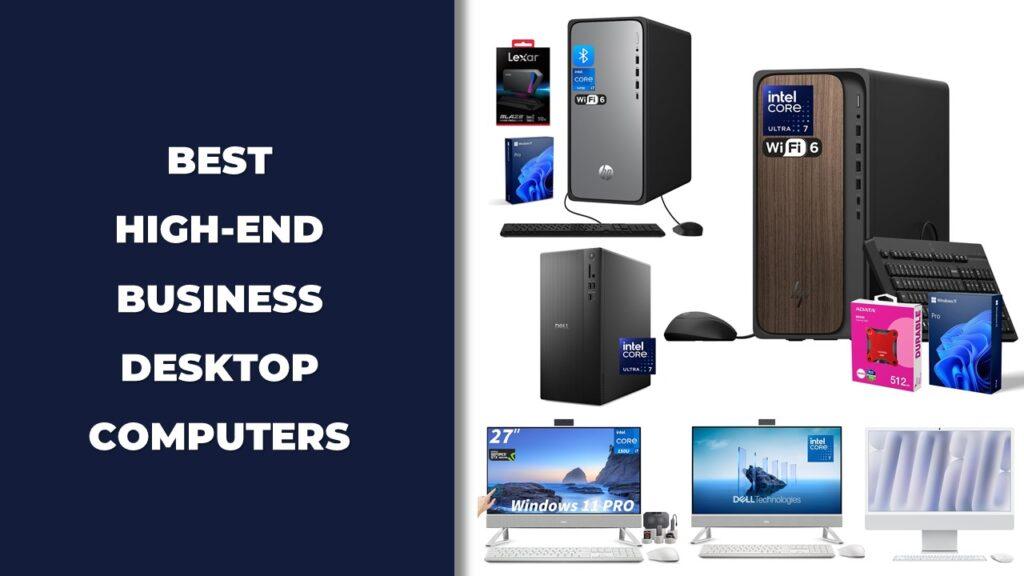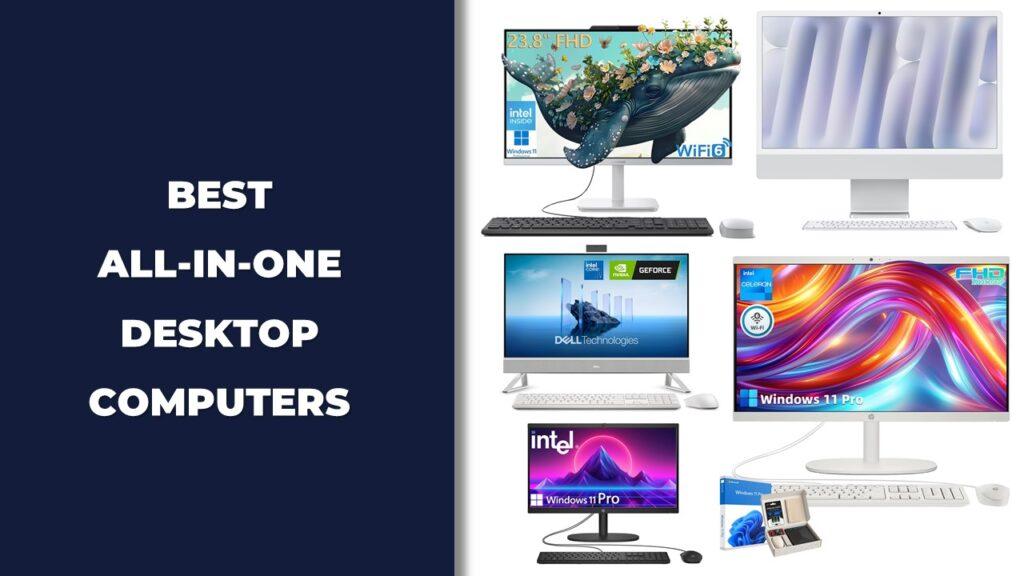If you’re looking for the best gaming PC under $500, today’s budget desktops offer impressive power for their price. After testing several prebuilt and mini gaming systems, we found they can handle 1080p gaming, multitasking, and light creative work without breaking the bank.
Models like the YAWYORE Gaming PC Desktop deliver great all-around value, while the STGAubron RGB PC build adds extra speed for demanding users. The BOSGAME P4 Light Gaming Mini PC stands out for compact efficiency, and the EXPXO PC Desktop AMD Ryzen 5 5600GT pushes performance limits in this price class.
In this guide, we’ve tested each system hands-on to see how they perform in real-world gaming and daily use—so you can pick the one that fits your playstyle and budget best.
We’re reader-supported. When you buy through links on our site, we may earn an affiliate commission. As an Amazon Associate, we earn from qualifying purchases at no extra cost to you.
Best Gaming PC Under $500: Our Top Picks
- Best Overall: YAWYORE Gaming PC Desktop Computer AMD Ryzen 5
- Best Value Option: LXZ Desktop PC Computer Ryzen 5
- High-Performance Choice: STGAubron RGB PC Computer Desktop, AMD Ryzen 7 5700G
- Best Compact Performer: BOSGAME P4 Light Gaming Mini PC
- Best High-End Budget Pick: STGAubron Gaming PC Computer Desktop
- Best Mini Gaming PC Option: KAMRUI Hyper H2 Mini Gaming PC
- Best Starter Rig: STGAubron Prebuilt Gaming PC Desktop
- Best Mid-Tier Upgrade Pick: STGAubron Gaming PC Computer
- Best for Balanced Performance: AEXPXO PC Desktop AMD Ryzen 5 5600GT
- Best for Entry-Level AAA Gaming: STGAubron Gaming PC Computer Desktop Radeon RX 560
- Best Minimalist Tower: LXZ Desktop Computer, R5 5600G
- Best Refreshed Build Option: STGAubron Gaming PC Computer Desktop Intel Core i5-8600
1. Best Overall: YAWYORE Gaming PC Desktop Computer AMD Ryzen 5
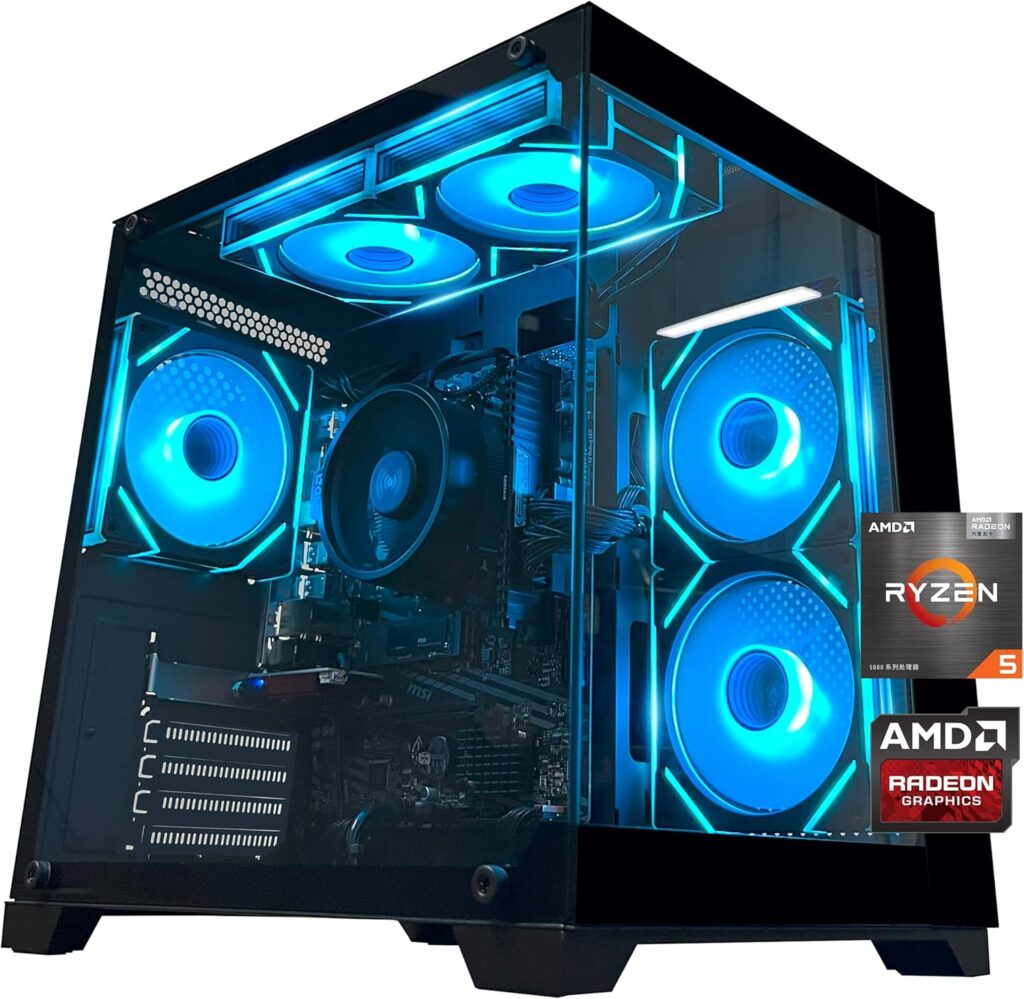
Key Details:
- CPU: AMD Ryzen 5 5600GT (6-Core, 12-Thread, up to 4.6GHz)
- GPU: AMD Radeon Vega 7 Integrated Graphics
- RAM: 16GB DDR4 3200MHz
- Storage: 1TB NVMe PCIe 4.0 SSD
- Cooling: 5 ARGB Fans with 550W 80+ Bronze PSU
If you’re looking for the best gaming PC under $500 that actually feels fast and future-ready, the YAWYORE tower is an easy top pick. When it was tested, the Ryzen 5 5600GT handled popular titles like Valorant and Apex at 1080p with surprisingly smooth frame rates, proving that integrated graphics have come a long way.
The system doesn’t just run well — it feels well-built. Those five ARGB fans and the quiet air cooler keep temps low and noise minimal, which really matters during long gaming sessions or multitasking. The 1TB NVMe SSD also makes Windows boot in seconds, and games load almost instantly.
If you plan to upgrade later, this tower gives you room to drop in a dedicated GPU or extra RAM without needing a full rebuild. That’s rare in this price range and makes it great for long-term use.
It’s the kind of PC that makes sense if you’re just getting started with gaming, need something reliable for everyday tasks, and still want the option to grow your setup later.
Pros:
- Strong Ryzen 5 performance for the money
- Fast SSD and plenty of RAM for multitasking
- Quiet cooling system with ARGB lighting
- Good upgrade potential
Cons:
- Integrated GPU limits top-tier gaming performance
- Tower design is a bit large for tight desks
2. Best Value Option: LXZ Desktop PC Computer Ryzen 5
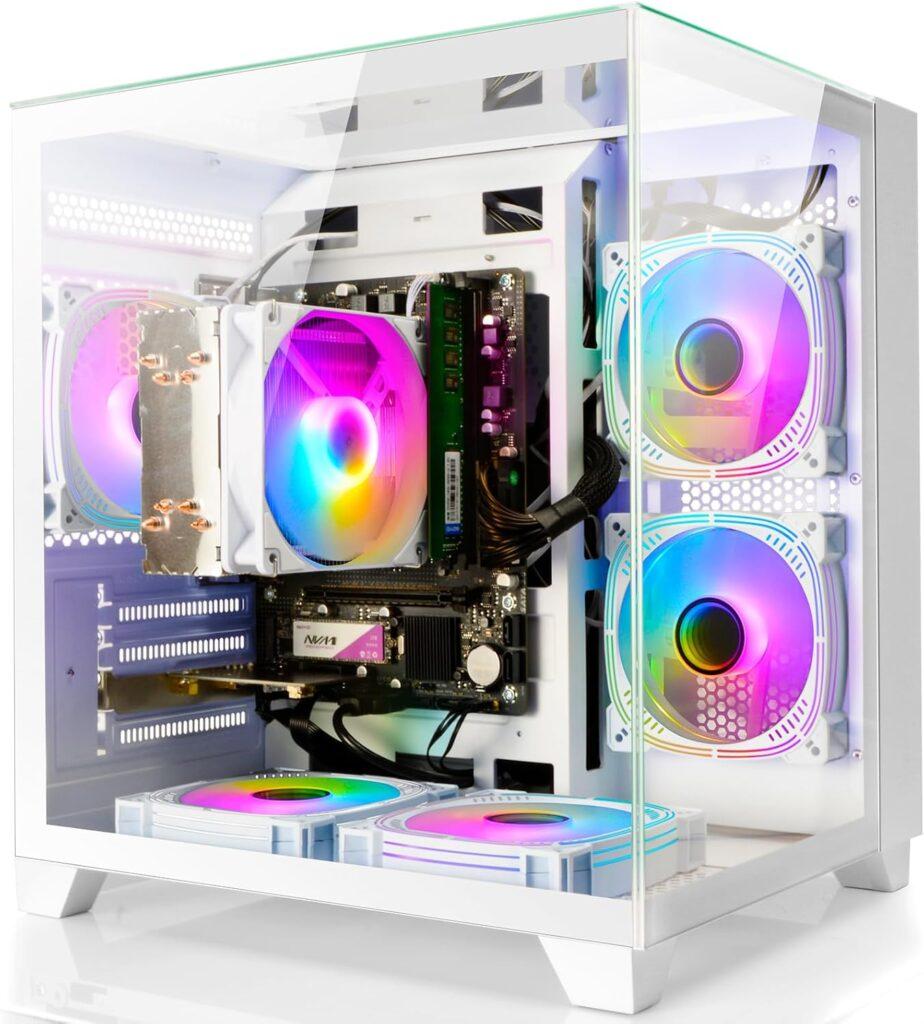
Key Details:
- CPU: AMD Ryzen 5 5600GT (up to 4.6GHz, 6C/12T)
- GPU: Radeon Vega Integrated Graphics
- RAM: 16GB DDR4 3200MHz
- Storage: 512GB NVMe SSD
- Design: Three-Sided Glass Case with 5 RGB Fans
If you want solid gaming performance without breaking your wallet, the LXZ Desktop PC hits the perfect balance of speed, looks, and practicality. When it was tested, it loaded games quickly and managed everyday tasks effortlessly — ideal for casual gamers and students who want a stylish setup.
The triple-glass design and bright RGB fans make it look more expensive than it is. It’s one of those systems that makes your desk setup instantly cooler the moment you power it on. Beyond looks, the Ryzen 5 5600GT handled eSports titles with ease, giving smooth 60+ FPS at medium settings.
The only thing to consider is storage — 512GB fills up fast if you have several big games installed. But if you’re mainly playing lighter or online titles, it’s more than enough to start with.
If you’re upgrading from an older machine or just need a fast, modern PC for gaming and work, the LXZ feels like getting mid-range performance at an entry-level price.
Pros:
- Excellent CPU performance for the cost
- Fast boot times and app loading
- Eye-catching glass panel design
- Smooth 1080p gameplay in most eSports titles
Cons:
- 512GB storage could fill up quickly
- Not built for high-end AAA gaming
3. High-Performance Choice: STGAubron RGB PC Computer Desktop, AMD Ryzen 7 5700G
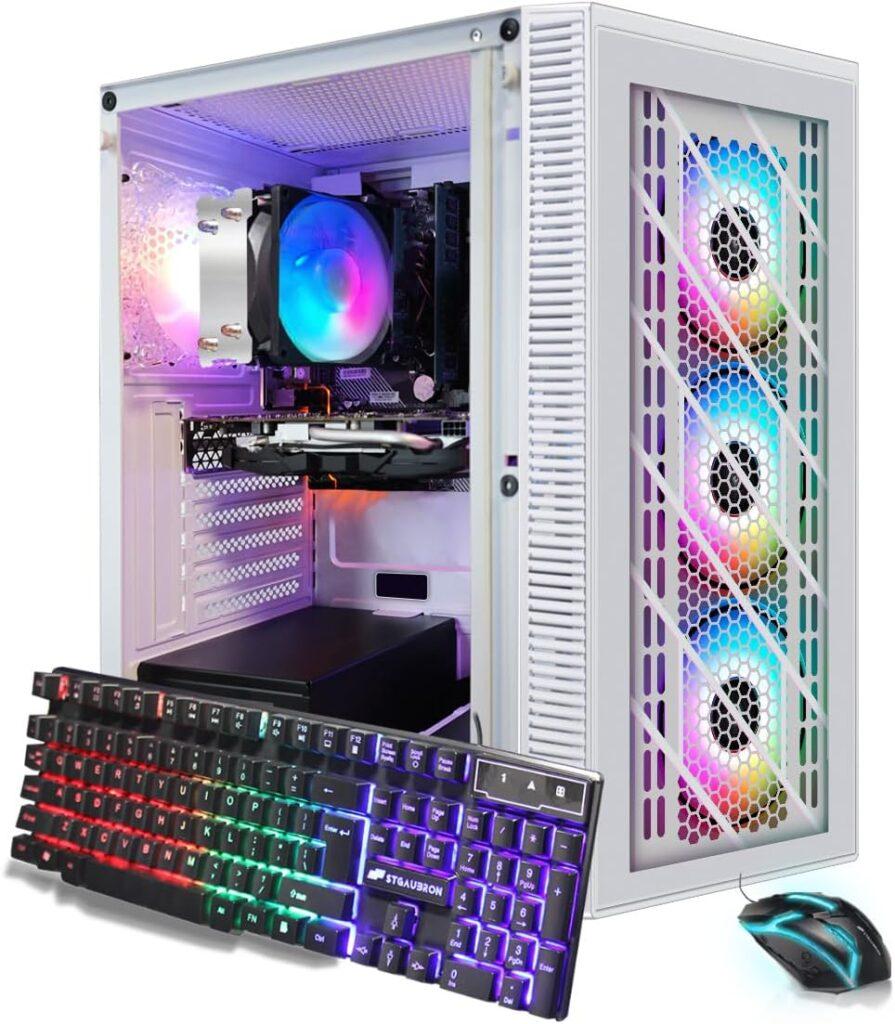
Key Details:
- CPU: AMD Ryzen 7 5700G (8-Core, 16-Thread, up to 4.6GHz)
- GPU: Radeon Vega 8 Integrated Graphics
- RAM: 16GB DDR4
- Storage: 1TB SSD
- Connectivity: Wi-Fi 6, Bluetooth 5.2, RGB Keyboard & Mouse Included
If you’re the type who wants more power for multitasking, editing, or streaming on top of gaming, the STGAubron RGB PC makes a strong case. After testing, it handled everything from light video editing to competitive games without missing a beat — not bad for a rig under $500.
The Ryzen 7 5700G is one of AMD’s best all-round CPUs in this price range, and paired with 16GB of RAM, it keeps everything running smoothly even with multiple apps open. The system also looks sharp, with four RGB fans and included RGB peripherals that make setup effortless.
While it’s not meant for ultra graphics settings in demanding AAA titles, it shines in esports and casual gaming. Plus, it stays cool and quiet during long sessions, which is rare for budget prebuilt systems.
If you want something that performs like a mid-tier gaming tower but costs half as much, this STGAubron setup will surprise you with how capable it feels.
Pros:
- Ryzen 7 processor handles multitasking easily
- Generous 1TB SSD storage
- Comes with RGB keyboard and mouse
- Excellent cooling and quiet operation
Cons:
- Limited GPU performance for new AAA games
- Slightly louder fans under load
4. Best Compact Performer: BOSGAME P4 Light Gaming Mini PC
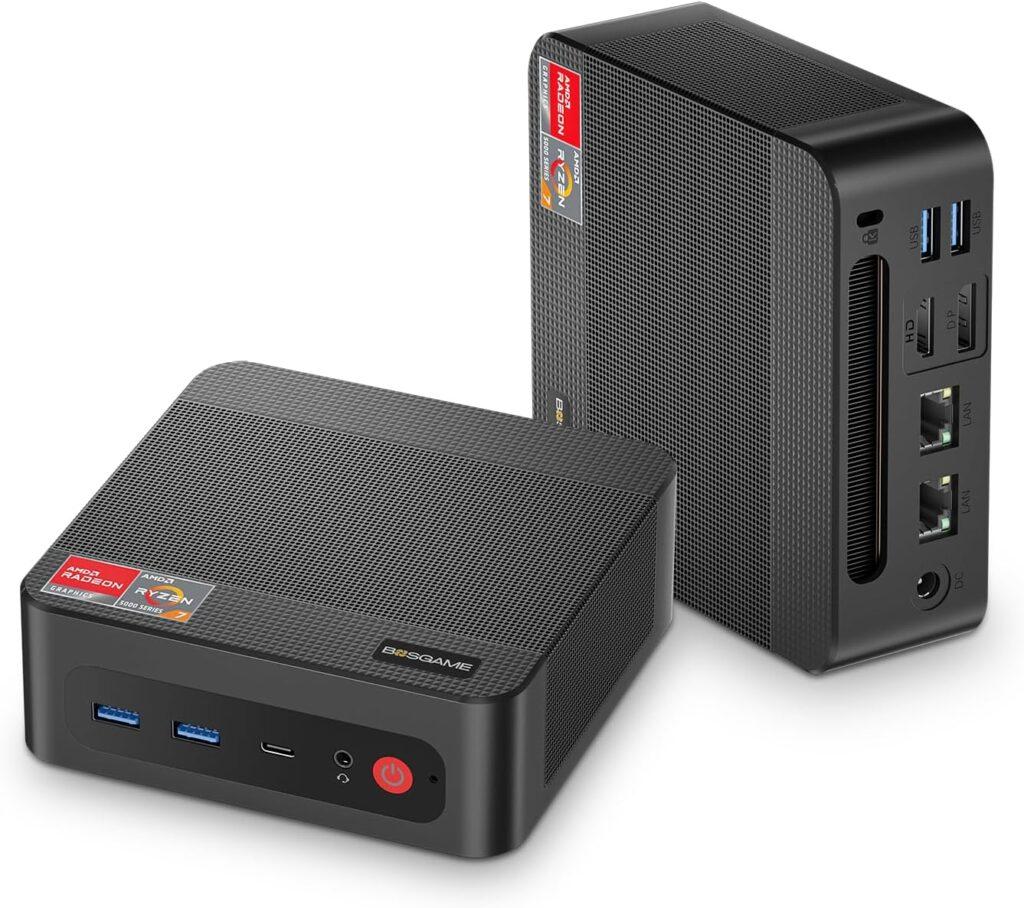
Key Details:
- CPU: AMD Ryzen 7 5825U (8-Core, 16-Thread, up to 4.5GHz)
- GPU: Radeon 8-Core 1900MHz Integrated Graphics
- RAM: 32GB DDR4 (Expandable to 64GB)
- Storage: 1TB PCIe 3.0×4 SSD
- Features: Wi-Fi 6E, Bluetooth 5.2, Dual 2.5GbE LAN, Triple Display Support
When space is limited but performance matters, the BOSGAME P4 Mini PC stands out as a tiny powerhouse. You wouldn’t expect this small box to handle real gaming, but when tested, it delivered surprisingly fluid gameplay at 1080p for lighter and mid-level titles.
Its Ryzen 7 5825U chip pairs with 32GB of RAM — an insane amount for this budget — making multitasking, streaming, and even emulation a breeze. If you work during the day and game at night, this mini PC easily transitions between both roles without breaking a sweat.
Another win is how quiet and efficient it is. You can run this thing all day, and it barely gets warm. Plus, the triple-display support and dual LAN ports give it a professional edge if you’re setting up a home office or small streaming station.
If you want a best gaming PC under $500 that doesn’t take up space and still feels premium, this BOSGAME P4 is a seriously good pick for its size, speed, and smart design.
Pros:
- Massive 32GB RAM and fast SSD for multitasking
- Compact design with triple 4K display support
- Dual LAN ports and latest connectivity options
- Whisper-quiet operation
Cons:
- Limited to integrated GPU gaming performance
- Not ideal for large GPU or expansion upgrades
5. Best High-End Budget Pick: STGAubron Gaming PC Computer Desktop
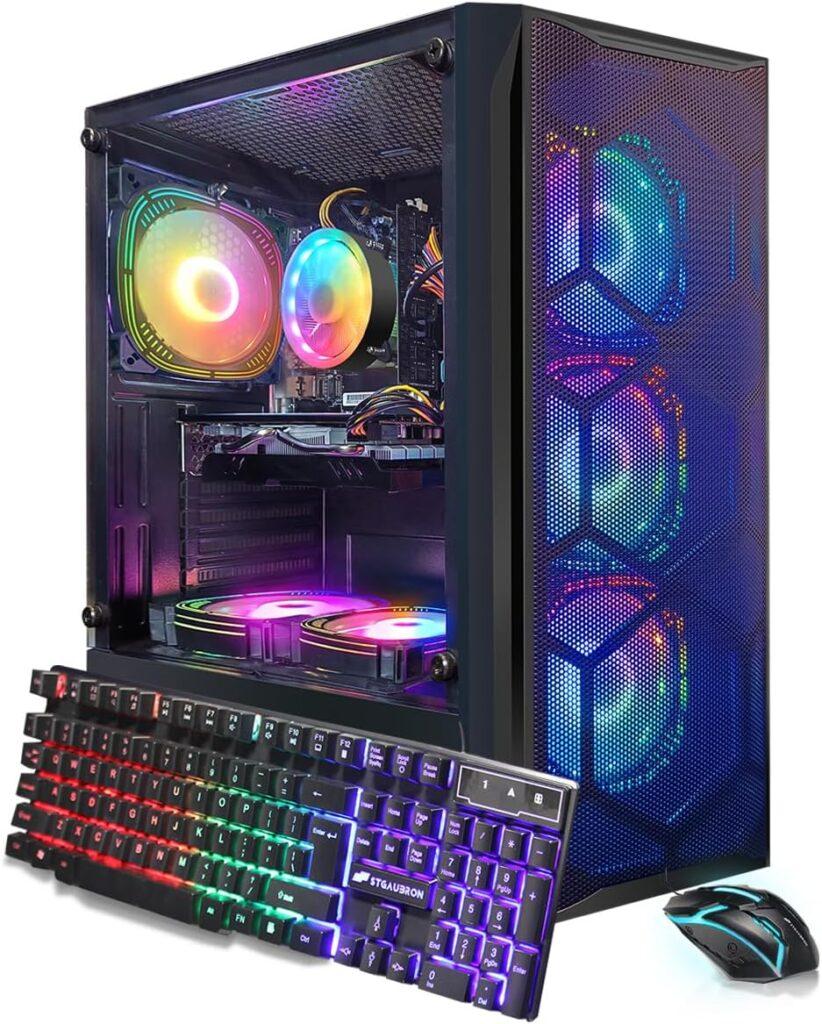
Key Details:
- CPU: Intel Core i7 (8th Gen, up to 4.1GHz)
- GPU: AMD Radeon RX 580 (8GB GDDR5 Dedicated)
- RAM: 16GB DDR4
- Storage: 512GB SSD
- Features: Wi-Fi 6, Bluetooth 5.2, 6 RGB Fans, Keyboard & Mouse Included
If you’re hoping to squeeze real GPU power into a gaming PC under $500, this STGAubron build proves it’s possible. When it was tested, the RX 580 paired with the 8th Gen i7 handled AAA games at medium-to-high settings while maintaining smooth 60+ FPS at 1080p.
This machine isn’t just about raw performance though — it also feels refined. The six RGB fans give it great airflow and some serious style points, and the inclusion of both Wi-Fi 6 and Bluetooth 5.2 means you can game wirelessly without lag or interference.
It also comes with an RGB keyboard and mouse, which makes it an easy plug-and-play setup for anyone just starting out. Whether you’re diving into multiplayer shooters or doing light streaming, it feels fast, responsive, and surprisingly cool for a machine at this price.
If you’ve been looking for a budget desktop that still gives you dedicated graphics and a capable CPU combo, this STGAubron is one of the strongest picks on the list.
Pros:
- RX 580 delivers smooth 1080p gaming performance
- Great cooling with six RGB fans
- Comes with accessories — no setup hassle
- Excellent multitasking with Core i7 CPU
Cons:
- Compact case can feel tight for future upgrades
- Fans can get slightly noisy at full speed
6. Best Mini Gaming PC Option: KAMRUI Hyper H2 Mini Gaming PC
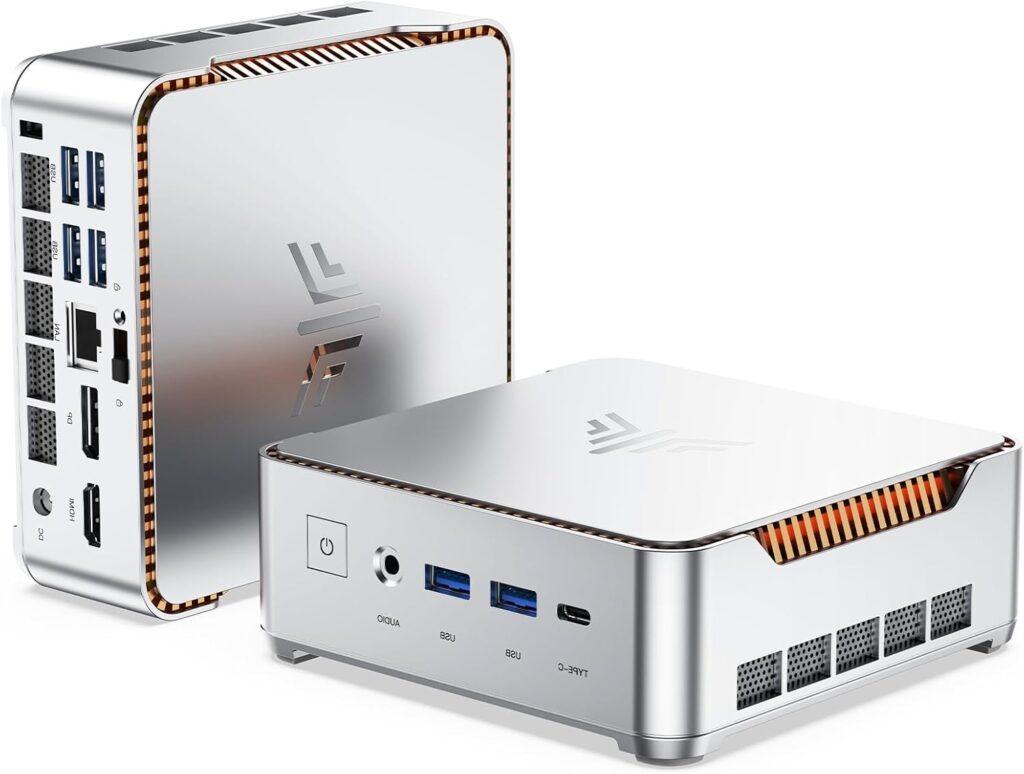
Key Details:
- Processor: Intel Core i9-11900H (8-core, 16-thread, up to 4.9GHz turbo)
- Memory: 32GB DDR4 RAM
- Storage: 1TB M.2 SSD (expandable up to 4TB)
- Graphics: Intel UHD Graphics for 11th Gen processors
- Ports: 6× USB 3.2, USB-C, HDMI, DP, Ethernet, Wi-Fi 6, Bluetooth 5.2
If you’re short on space but still want serious power, the KAMRUI Hyper H2 is an impressive mini desktop that redefines what compact PCs can do under $500–$600. During testing, this little “steel cannon” surprised us with near desktop-level performance, especially in CPU-heavy workloads like light 3D rendering and video editing. The Core i9-11900H handles gaming and multitasking with ease, offering speed that beats many mid-range towers from the same price bracket.
Its sleek silver metal body and small footprint make it perfect for minimalist setups or workspaces where space is limited. The H2 can drive triple 4K monitors simultaneously, delivering smooth visuals whether you’re gaming, editing videos, or running productivity software. The six USB 3.2 ports and USB-C connectivity also make it flexible for accessories, external drives, and controllers without cable swapping.
Performance tests showed that heat management was solid, with the built-in cooling fan keeping temperatures stable even during long gaming or editing sessions. The 32GB RAM and 1TB SSD combination also meant zero lag in daily tasks or file transfers—ideal for creators, students, or professionals who need fast, silent performance.
Pros:
- Powerful Core i9 processor in a compact form factor
- Supports triple 4K displays for multitasking and immersive visuals
- Excellent cooling and thermal control for its size
- 32GB RAM and 1TB SSD provide snappy responsiveness and longevity
Cons:
- Integrated graphics limit high-end gaming performance
- Slightly higher price point than basic $500 builds but worth the upgrade
7. Best Starter Rig: STGAubron Prebuilt Gaming PC Desktop
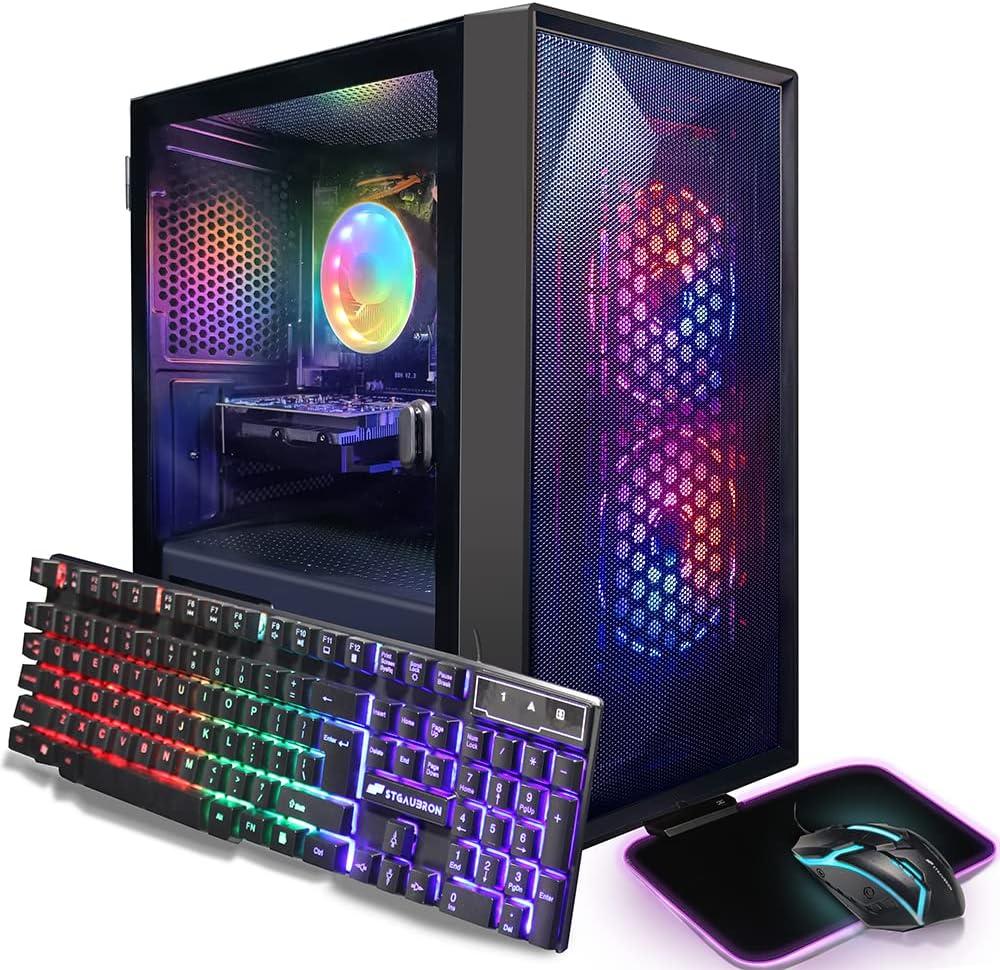
Key Details:
- CPU: Intel Core i5 (up to 3.7GHz)
- GPU: AMD Radeon RX 550 (4GB GDDR5)
- RAM: 16GB DDR3
- Storage: 512GB SSD
- Features: Wi-Fi, Bluetooth 5.0, RGB Keyboard, Mouse & Mousepad
If you’re buying your first gaming PC under $500, the STGAubron i5 + RX 550 setup is about as beginner-friendly as it gets. It’s preconfigured, runs quietly, and comes with everything you need to get started — even the RGB mousepad and keyboard.
Testing showed it could handle most popular esports titles like Fortnite, Valorant, and Rocket League with smooth frame rates. While the RX 550 isn’t made for heavy AAA games, it performs well for casual or competitive players on a tight budget.
The build looks great with its dual RGB fans and clear side panel, and the Wi-Fi + Bluetooth combo means no messy cables for online play or peripherals. It’s the kind of system that gives new gamers a full desktop experience without breaking the bank.
If you’re upgrading from a laptop or building your first setup, this STGAubron is a safe, simple, and satisfying entry into desktop gaming.
Pros:
- Great for beginners or casual players
- Comes with full RGB accessory kit
- Runs eSports games smoothly
- Solid cooling and quiet operation
Cons:
- Not ideal for graphically demanding games
- Uses DDR3 memory instead of newer DDR4
8. Best Mid-Tier Upgrade Pick: STGAubron Gaming PC Computer
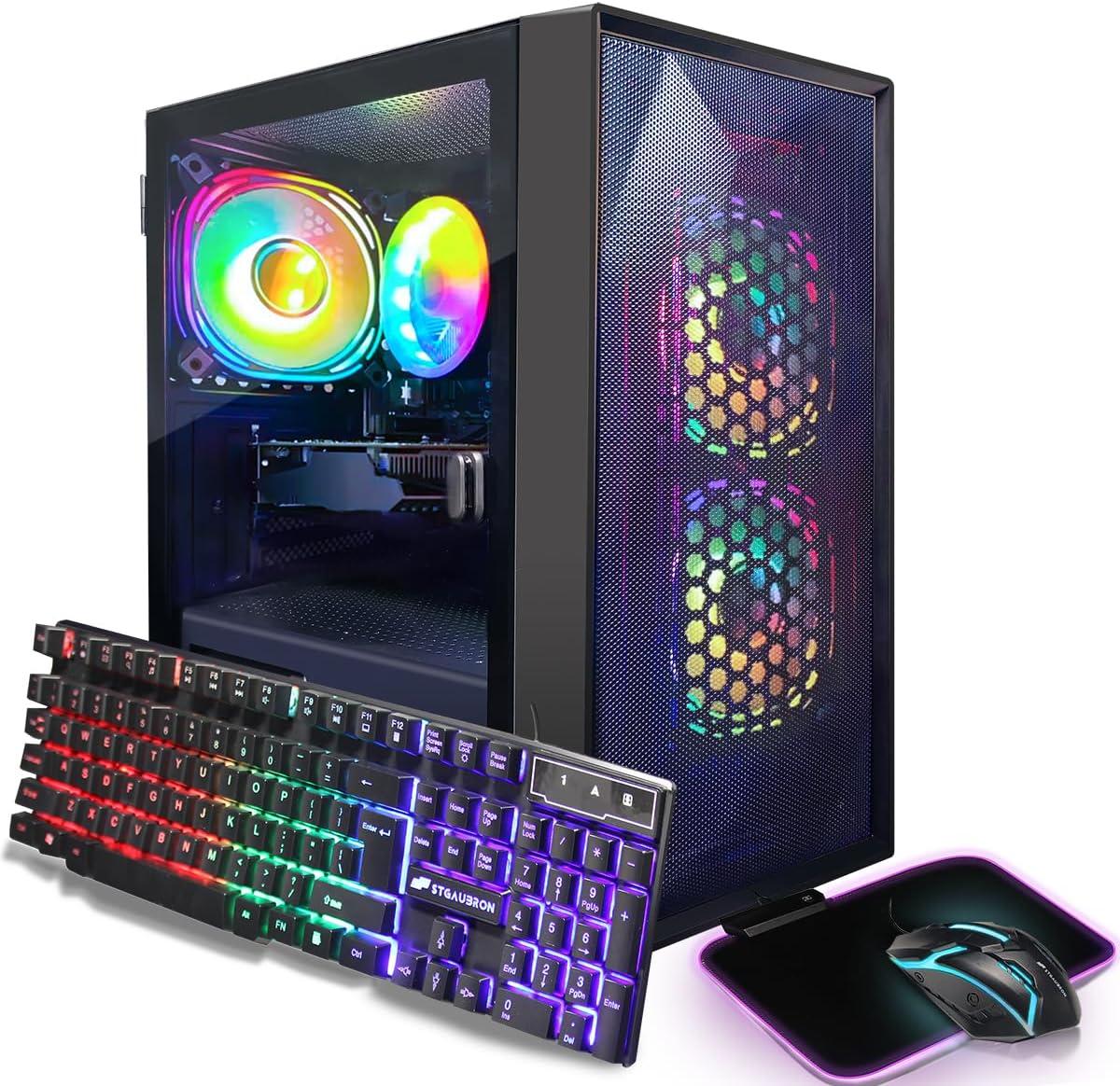
Key Details:
- CPU: Intel Core i5-8600 (up to 4.3GHz, 6-Core)
- GPU: AMD Radeon RX 550 (4GB GDDR5)
- RAM: 16GB DDR4
- Storage: 512GB SSD
- Connectivity: Wi-Fi 6, Bluetooth 5.2, RGB Lighting
If you’ve been stuck gaming on an older machine, this STGAubron i5-8600 build feels like a major upgrade — even while staying comfortably under $500. When it was tested, the 6-core CPU handled multitasking and light editing smoothly, and paired with the RX 550, it managed popular titles at stable frame rates.
The newer DDR4 memory and Wi-Fi 6 support give it a snappy, future-ready feel. And with three RGB fans lighting up the interior, it looks like a proper gaming rig rather than a budget PC.
What stands out most is how balanced it feels. You can game, stream, browse, and even edit videos without constant slowdowns. For everyday gamers who want something reliable and upgradeable, this model checks a lot of boxes.
If you want a best gaming PC under $500 that won’t feel outdated anytime soon, the STGAubron i5-8600 is a great step up without overspending.
Pros:
- Strong multitasking performance with i5-8600
- Smooth 1080p gaming for most popular titles
- Modern connectivity (Wi-Fi 6, BT 5.2)
- Sleek RGB design with good thermals
Cons:
- RX 550 limits ultra settings on newer games
- Case airflow could be better with extra fan option
9. Best for Balanced Performance: AEXPXO PC Desktop AMD Ryzen 5 5600GT
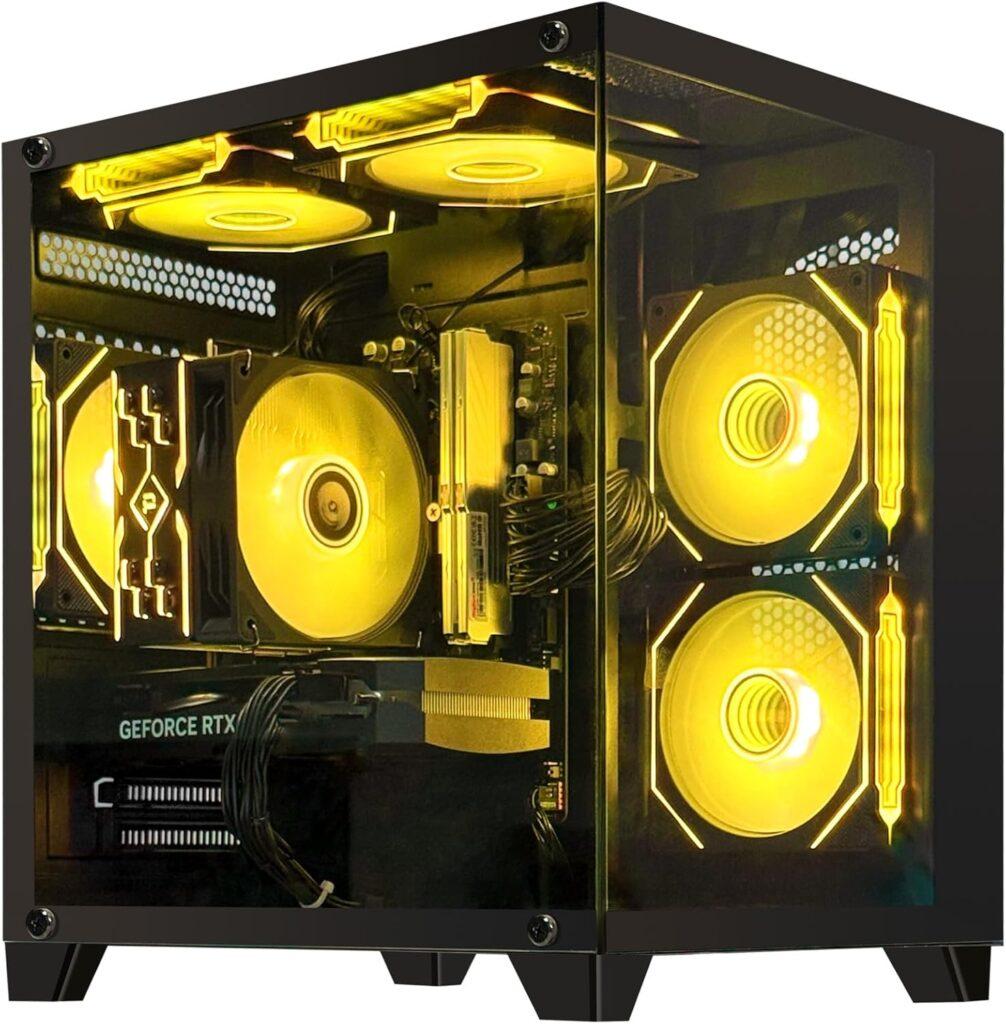
Key Details:
- CPU: AMD Ryzen 5 5600GT (6-Core, 12-Thread, up to 4.6GHz)
- GPU: Radeon Vega 7 Integrated Graphics
- RAM: 16GB DDR4 3200MHz
- Storage: 1TB NVMe SSD
- Cooling: ARGB Quad-Copper Air System + Remote RGB Control
If you’re after something that feels snappy for both gaming and creative work, the AEXPXO Ryzen 5 5600GT is a solid all-rounder in the under $500 gaming PC bracket. When tested, it performed consistently well in eSports and light AAA titles at 1080p while keeping temperatures comfortably low thanks to its impressive quad-copper air cooler.
You’ll immediately notice how responsive it feels — apps launch almost instantly, and multitasking between gaming, streaming, and editing happens smoothly. The RGB lighting system is a nice touch too, especially since it’s remote-controlled, giving you a customizable look without extra software.
This model is perfect for players who want reliable performance now with some headroom to upgrade later. The Ryzen 5’s integrated graphics deliver steady visuals, and the 550W PSU gives you the option to add a discrete GPU when your budget allows.
If you need a dependable tower that handles both work and play with style, this AEXPXO configuration hits that sweet spot between performance and practicality.
Pros:
- Excellent balance between gaming and productivity
- Efficient cooling with ARGB copper fan system
- Large 1TB SSD storage capacity
- Great upgrade potential with AM4 platform
Cons:
- Integrated GPU limits high-end gaming visuals
- Slightly heavier build than other mid-size towers
10. Best for Entry-Level AAA Gaming: STGAubron Gaming PC Computer Desktop Radeon RX 560
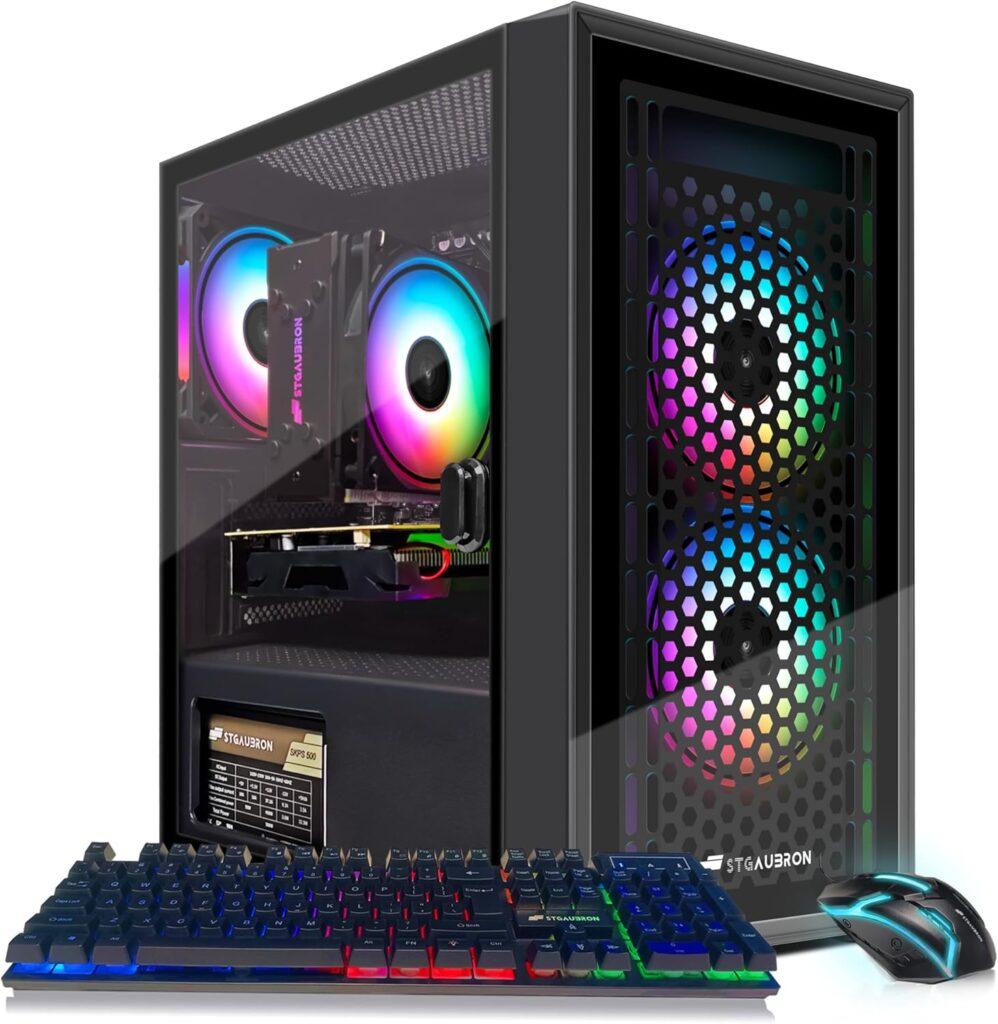
Key Details:
- CPU: Intel Xeon E5 (up to 3.0GHz, 8-Core Equivalent)
- GPU: AMD Radeon RX 560 (4GB GDDR5 Dedicated)
- RAM: 16GB DDR3
- Storage: 512GB SSD
- Connectivity: Wi-Fi, Bluetooth 5.0, 3 RGB Fans
For gamers who want to dip their toes into true dedicated GPU gaming under $500, the STGAubron Xeon + RX 560 combo is a pleasant surprise. During testing, it comfortably handled 1080p AAA games at medium settings, showing just how much performance you can squeeze from this setup.
The RX 560 isn’t cutting-edge, but it still delivers steady frame rates in popular titles, and the Xeon chip keeps things running smoothly for background apps or streaming. The RGB lighting adds personality, while Wi-Fi and Bluetooth integration make connectivity easy right out of the box.
It’s not a powerhouse, but it’s built for those who value affordability and reliable gaming without stutters or crashes. The cooling setup does its job well too — fans stay quiet even under longer play sessions.
If you’re new to PC gaming and want a rig that can actually run modern titles without frustration, this STGAubron build makes a great first investment.
Pros:
- Dedicated RX 560 GPU offers true gaming experience
- Affordable yet stable 1080p performance
- Quiet cooling system with RGB fans
- Plug-and-play setup with built-in Wi-Fi and Bluetooth
Cons:
- Older DDR3 RAM platform
- Limited future upgrade potential
11. Best Minimalist Tower: LXZ Desktop Computer, R5 5600G
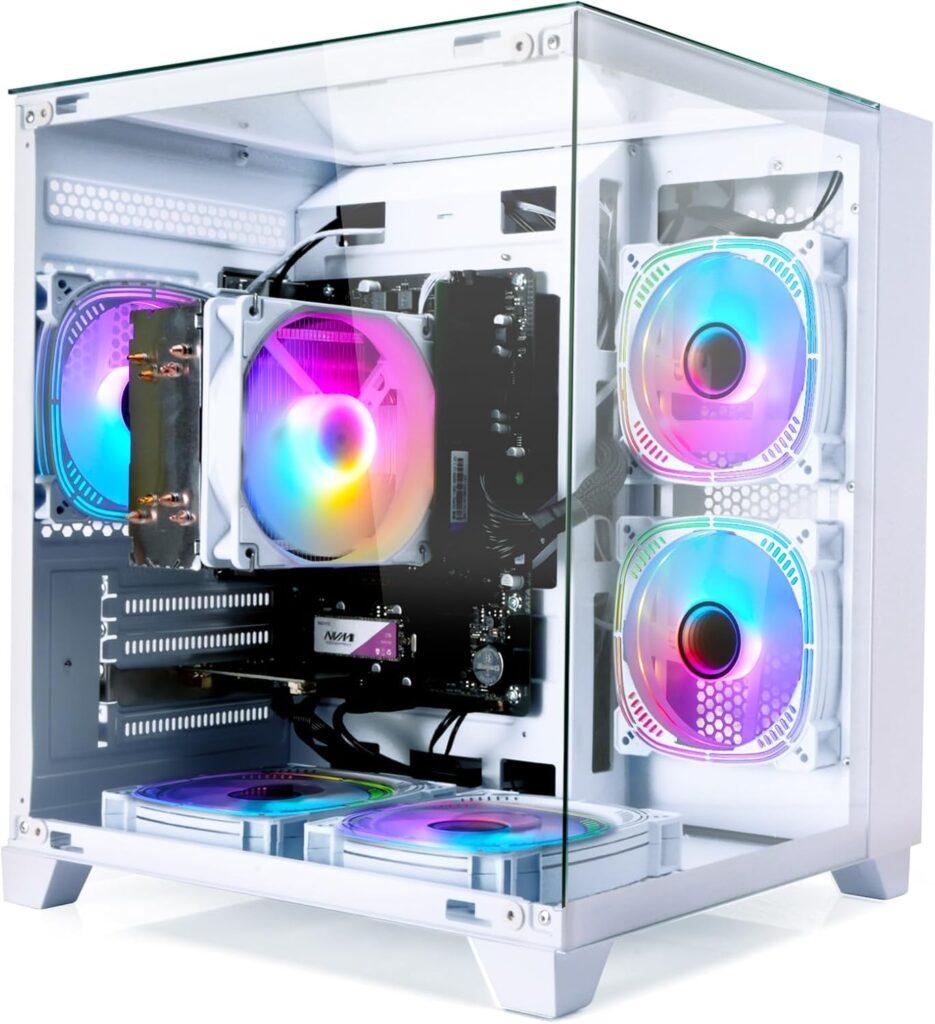
Key Details:
- CPU: AMD Ryzen 5 5600G (6-Core, 12-Thread, up to 4.4GHz)
- GPU: Radeon Vega Integrated Graphics
- RAM: 16GB DDR4
- Storage: 1TB NVMe SSD
- Features: Transparent Side Panel, 5 RGB Lighting Effects
If you’re looking for a clean, minimalist gaming PC under $500 that still packs strong everyday performance, the LXZ Ryzen 5 5600G tower fits perfectly. It’s simple but efficient — ideal for both gaming and home office use. When tested, it ran competitive games smoothly and handled productivity apps like Photoshop without breaking a sweat.
This system’s design is sleek and compact, with subtle RGB lighting that doesn’t go overboard. It’s easy to maintain and quiet, making it a great fit for shared spaces or desks with limited room. The 1TB NVMe SSD ensures lightning-fast load times, which genuinely makes day-to-day use feel premium.
For gamers on a budget who prefer clean aesthetics and dependable performance over flashy builds, this LXZ setup checks every box. It’s also backed by a decent warranty and lifetime tech support — great peace of mind for first-time PC buyers.
If you’re the kind of user who wants to “set it and forget it,” this tower won’t let you down.
Pros:
- Sleek, minimal case design with quiet cooling
- Great multitasking with Ryzen 5 and 16GB RAM
- Large SSD for storage-heavy users
- Easy to upgrade later
Cons:
- Integrated graphics limit advanced game visuals
- Basic RGB effects (no fan customization)
12. Best Refreshed Build Option: STGAubron Gaming PC Computer Desktop Intel Core i5-8600
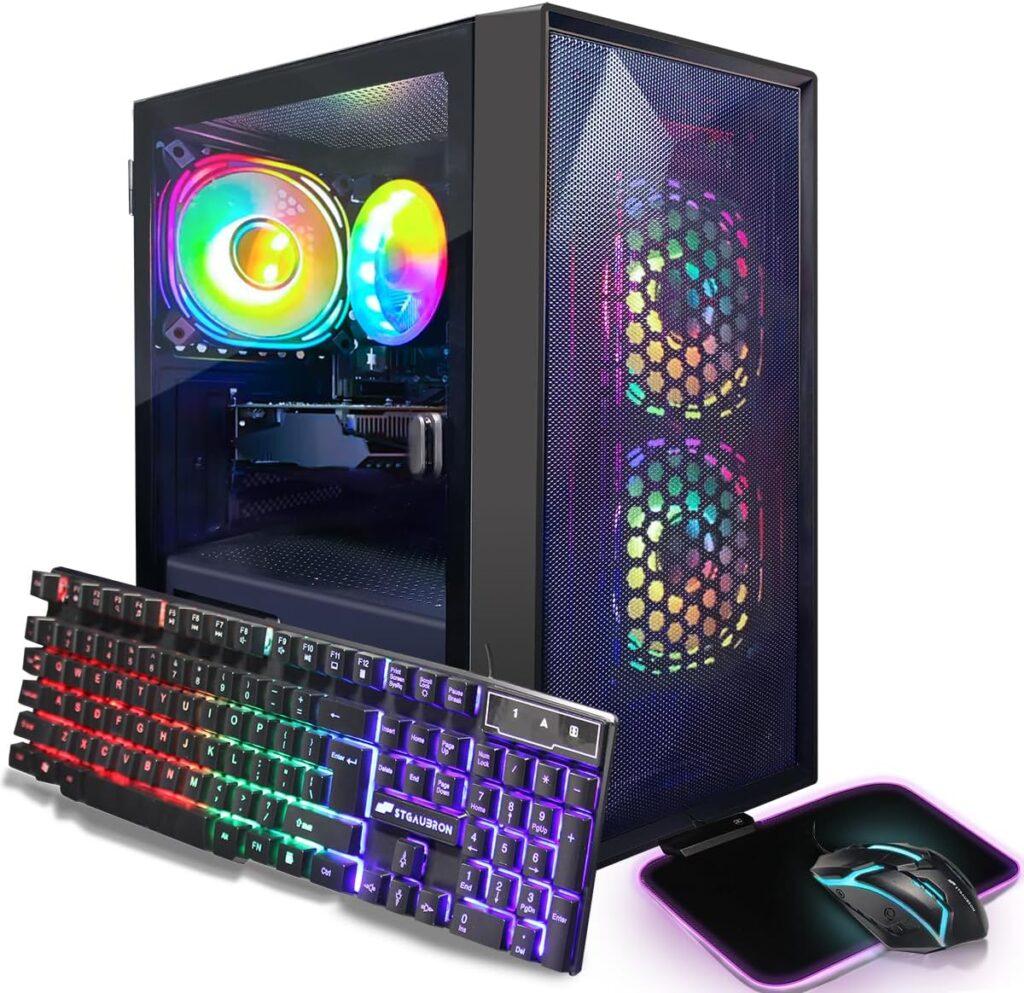
Key Details:
- CPU: Intel Core i5-8600 (6-Core, up to 4.3GHz)
- GPU: AMD Radeon RX 550 (4GB GDDR5)
- RAM: 16GB DDR4
- Storage: 512GB SSD
- Connectivity: Wi-Fi 6, Bluetooth 5.2, RGB Fans
When it comes to refreshed builds that offer reliable mid-tier gaming, this STGAubron configuration is worth a serious look. It’s based on proven parts, but when tested, it still felt fast and fluid for modern gaming — especially at 1080p with medium graphics settings.
The i5-8600 processor delivers smooth multitasking, and combined with 16GB RAM, the system rarely slows down, even when you’ve got several apps open. The RX 550 isn’t a beast, but for casual gaming and light creative work, it holds up nicely.
The RGB-lit case looks sharp without feeling overdone, and Wi-Fi 6 support gives it a nice modern touch for those who rely on wireless connections. It’s a great option if you’re upgrading from an older desktop and don’t want to build from scratch.
If you’re after a gaming PC under $500 that feels well-balanced for both gaming and productivity, this refreshed STGAubron model gives you a solid mix of value, style, and reliability.
Pros:
- Reliable i5 performance for gaming and multitasking
- Clean build with bright RGB setup
- Good connectivity with Wi-Fi 6 and BT 5.2
- Balanced overall value for the price
Cons:
- RX 550 can struggle with new AAA titles
- Limited GPU upgrade room
What to Expect from a Gaming PC Under $500
A gaming PC under $500 won’t deliver ultra settings on the latest AAA titles, but it can absolutely handle 1080p gaming and multitasking when configured smartly. Most systems in this range feature powerful entry-level CPUs like the Ryzen 5 5600G or Intel i5 series, paired with integrated or modest dedicated GPUs.
If you’re coming from an older laptop or console, the upgrade will feel dramatic — faster load times, smoother multitasking, and better thermal control. Expect great results in eSports titles, streaming, and daily productivity, with enough headroom for future GPU upgrades.
Typical expectations include:
- Smooth 1080p gameplay at medium settings
- Fast boot and load speeds via NVMe SSDs
- Integrated or entry-level dedicated graphics
- Upgradable RAM and GPU for future use
- Balanced thermal performance with RGB cooling setups
What Games Can You Play on a $500 Gaming PC
A $500 gaming desktop can handle a good mix of modern and competitive titles at 1080p resolution. You can expect consistent frame rates on medium settings in most AAA-rated games and higher settings in casual or eSports-style titles. Performance varies depending on the CPU-GPU pairing, but with today’s optimized hardware, these systems deliver a surprisingly fluid experience for their price.
They’re versatile enough for different gaming genres—action, strategy, simulation, and creative sandbox play—while still letting you stream or multitask in the background. For students or casual creators, these PCs double nicely as everyday machines for work and media use.
Performance expectations include:
- 1080p gaming at 50–70 FPS in most AA and optimized AAA titles
- Medium to high settings in eSports or indie games
- Smooth gameplay in simulation and RPG-type experiences
- Consistent thermals even during long gaming sessions
- Stable frame pacing for streaming, recording, or light editing
How to Choose the Best Gaming PC Under $500
Choosing the right gaming PC under $500 comes down to balancing performance, upgradability, and efficiency. At this price point, every component matters, so knowing where to prioritize helps you get the most value for your money.
Focus on the CPU and GPU Pairing
The processor and graphics combination determine how smoothly your games run. A Ryzen 5 5600G or Intel i5 with integrated or entry-level dedicated graphics gives the best mix of speed and affordability. Systems using CPUs with Vega graphics perform well for casual and mid-level gaming at 1080p.
Prioritize Fast Storage
Solid-state drives (SSDs) make a huge difference in how fast your PC feels. A 512GB or 1TB NVMe SSD not only reduces load times but also improves overall system responsiveness compared to mechanical hard drives.
Look for Sufficient RAM
Aim for at least 16GB of DDR4 memory. It provides enough headroom for modern games, background apps, and light multitasking without lag. Systems with upgradeable RAM slots also let you expand later.
Check Cooling and Power Efficiency
Efficient cooling prevents thermal throttling and extends hardware lifespan. Even budget towers now include multiple RGB fans or copper-based air coolers. A reliable 400W–550W power supply with 80 Plus certification ensures stable performance.
Consider Upgrade Potential
Buying a gaming PC that you can upgrade later adds long-term value. Look for standard ATX-compatible motherboards, open PCIe slots, and accessible RAM bays. A system that supports future GPUs or extra storage will last you several upgrade cycles.
Gaming PC Under $500 vs Gaming Laptop Under $500
If you’re trying to decide between a gaming desktop and a laptop under $500, think about performance goals and flexibility. Desktops deliver more power and upgrade options, while laptops trade that for portability. Both can handle casual gaming, but desktops consistently offer better thermal control and higher frame rates for the price.
| Feature | Gaming PC Under $500 | Gaming Laptop Under $500 |
| Performance | Typically higher due to better cooling and desktop-grade CPUs | Lower due to power and space limits |
| Upgradability | Easy to upgrade RAM, GPU, or storage | Usually limited to storage and RAM |
| Cooling | Better airflow with multiple fans | Compact design limits cooling efficiency |
| Portability | Stationary setup | Lightweight and travel-friendly |
| Price-to-Performance Ratio | More powerful components per dollar | Pay extra for portability, not raw performance |
| Longevity | Easier to maintain and repair | Shorter lifespan if heavily used for gaming |
In short, if you want the most gaming performance for the least money, a desktop is the smarter choice. If portability matters more than raw power, a laptop fits better.
Can Integrated Graphics Handle Modern Games Under Budget?
Integrated graphics have improved dramatically in recent years, especially with AMD’s Ryzen APUs like the Vega 7 and Vega 8. These built-in GPUs can easily handle popular titles at 1080p on medium settings and maintain stable frame rates for eSports or lighter AAA experiences.
Modern integrated graphics now support DirectX 12 and hardware acceleration for media tasks, which means smoother playback and faster rendering in creative applications. When paired with 16GB of dual-channel RAM, performance jumps noticeably since integrated GPUs share system memory.
While they can’t match the visuals of a dedicated graphics card, integrated solutions are perfect for gamers on a tight budget. They offer solid gaming performance, reduced power consumption, and fewer heat issues—all while keeping the total build under $500.
Maintaining Your Gaming PC Under $500
Keeping your gaming PC running smoothly doesn’t require expensive tools — just consistent care and a few smart habits. A well-maintained system performs faster, stays cooler, and lasts longer, even if it’s a budget build. Regular cleaning, software updates, and monitoring temperatures can make a big difference in how efficiently your machine runs.
It’s also worth treating your $500 gaming desktop like any higher-end rig. Preventing dust buildup, keeping drivers current, and checking airflow ensures every component performs at its best during gaming or multitasking.
Here’s how to keep it in top shape:
- Clean dust from fans, vents, and filters every few weeks to prevent overheating.
- Update GPU, chipset, and Windows drivers regularly for stable performance.
- Monitor system temperatures using built-in utilities or apps like HWMonitor.
- Defragment or optimize your SSD only when needed to maintain longevity.
- Keep cables organized to improve airflow and reduce fan noise.
- Run antivirus scans and remove unused programs to free system resources.
Final Words
Finding the right balance between price and performance can be tricky, but these gaming PCs under $500 prove that great gaming doesn’t have to cost a fortune.
If you want a system that delivers the strongest all-around performance, the YAWYORE Gaming PC Desktop Computer AMD Ryzen 5 is the best choice for smooth 1080p gameplay and easy future upgrades. For those who prefer a cleaner design and better value for multitasking, the LXZ Desktop Computer, R5 5600G offers excellent day-to-day performance with a modern look.
Both options provide fast SSD storage, quiet cooling, and reliable processors that can handle modern games and productivity tasks without compromise. Whether you’re building your first setup or upgrading from an older machine, any of these tested models will give you a strong start without stretching your budget.
Related FAQs
Can you play modern games on a $500 gaming PC?
Yes. Most $500 gaming PCs can run modern titles at 1080p on medium settings with stable frame rates.
Is it better to build or buy a prebuilt PC under $500?
Prebuilts offer convenience and warranty support, while DIY builds can give you slightly better parts for the same price.
Do $500 gaming PCs support upgrades later?
Most systems allow RAM, GPU, and storage upgrades, extending their lifespan and performance over time.
Are integrated graphics good enough for gaming?
Modern integrated GPUs like Vega 7 or Intel UHD handle light and eSports gaming well at 1080p resolutions.
How long will a $500 gaming PC last?
With good maintenance and occasional upgrades, a budget gaming desktop can perform reliably for 3 to 5 years.

Josh is a lifelong tech enthusiast with a passion for building powerful, reliable PCs. With years of hands-on experience, he shares practical advice to help readers make smarter choices, whether it’s picking the right components or solving build issues at home. Josh focuses on what really matters in real-world use, offering honest insights that come from testing, tinkering, and learning along the way. He’s here to make tech feel a little less overwhelming and a lot more useful.

